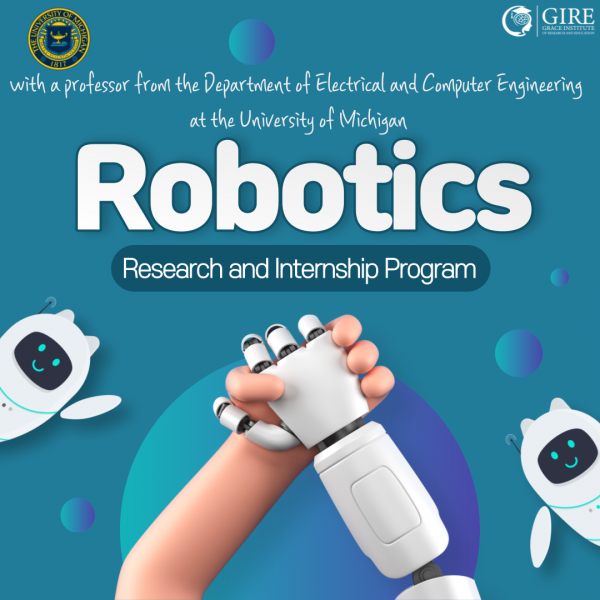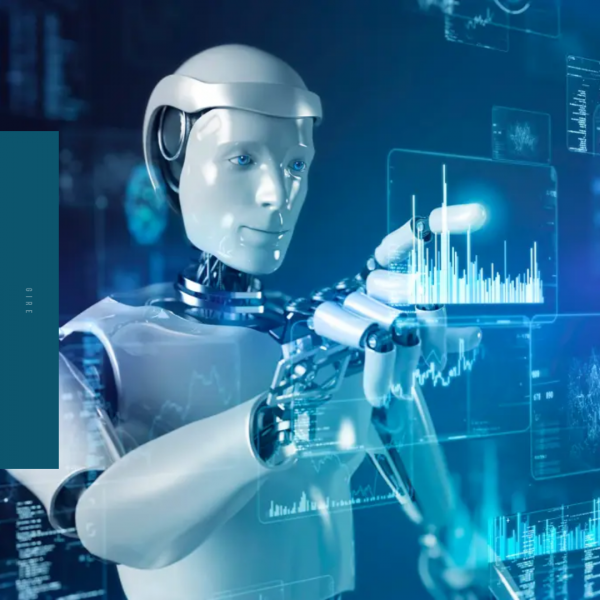|

Hello, this is GIRE!
Robots are increasing their intellectual and mechanical abilities to the extent that we cannot rule out the possibility of machines like R2-D2 appearing in the future. Robots such as R2-D2, Terminator, and WALL-E are fascinating even in popular culture. At GIRE, we will teach you how to do the research professionally with a professor from the Department of Electrical and Computer Engineering at the University of Michigan.

[What is Robotics?]

Robotics is a branch of engineering and computer science that deals with the concept, design, manufacture, and operation of robots. The goal of the field of robotics is to create intelligent machines that can assist humans in a variety of ways. Robots can be human-like or in the form of robotic applications, such as robotic process automation, where humans work with software to perform repetitive, rule-based tasks.
The demand for automation has created many subcategories of robots, from large industrial robots to small ‘cobots’ and household robots.
According to Statia (2023), “The global robotics industry is projected to hit $43.32 billion in revenue by 2027.”

[Origin of robotics] The word robot comes from the Czech word ‘robota’, meaning “forced labor.” The first use of this term was in the 1920 play 'Rossum's Universal Robots' by Czech writer Karel Čapek. This word was used to refer to a character in the play who was a mass production worker who was unable to think creatively. However, in the 1940s, the Oxford English Dictionary credited science fiction writer Isaac Asimov as the first person to use the term. In his novel, Asimov laid out three principles that guide the behavior of autonomous robots and smart machines: 1. Robots must not harm humans. 2. The robot must follow human instructions without violating rule 1. 3. The robot must protect itself without violating other rules. His three principles of robotics persist to this day.
[Types of Robots]
All robots vary in design, functionality, and degree of autonomy. From the 0.2 millimeter-long RoboBee to the 200-meter-long robot ship Vindskip, robots are emerging that can perform tasks that humans cannot. Robots can be broadly classified into five types based on their functions.
 ▶Pre-Programmed Robots: Pre-programmed robots operate in a controlled environment performing monotonous tasks. An example would be a mechanical arm on an automobile assembly line. ▶Humanoid Robots: Humanoid robots are robots that resemble or imitate human behavior. Two of the most prominent examples are Sophia from Hanson Robotics and Atlas from Boston Dynamics. ▶Autonomous Robots: Autonomous robots operate independently of human operators. An example is the Roomba vacuum cleaner, which uses sensors to move freely around the house. ▶Teleoperated Robots: Semi-autonomous robots that can be controlled by humans from a safe distance using wireless networks. Examples include human-piloted submarines or drones used to detect mines on the battlefield. ▶Augmented Robots: Augmented robots, also known as VR robots, enhance current human abilities or replace abilities that humans have lost. Examples include robotic prosthetic limbs or exoskeletons used to lift heavy weights. [Use of robots] 
▶Manufacturing: Robots are used to efficiently test and assemble products such as automobiles and industrial equipment.
▶Logistics: Robots take items off shelves, transport them to the warehouse floor, and pack them. And with the rise of last-mile robots (bots that automatically deliver packages to your door), it won't be long before you come face-to-face with logistics robots. ▶Travel: The combination of data science and robotics is taking autonomous vehicles by storm across the world. Companies like Tesla, Ford, Waymo, Volkswagen, and BMW are working to develop this next wave of travel. ▶Healthcare: Robots are used in nearly every aspect of healthcare, from robot-assisted surgery to robots that help humans recover from injuries during physical therapy. [Robotics Research: Professor Shai Revzen] 
GIRE is supporting research experiences to explore ‘robotics’ in depth with Professor Shai Revzen of the Electrical and Computer Engineering Department at the University of Michigan.
▶Research interests: #Biomimetic control #Dynamic systems #Biomechanics #Modular robotics ▶Recommended students: Students who are interested in robotics and are preparing to enter engineering school. Students who want to solve real-life problems by making their mathematical tools and hardware These are the research topics currently being conducted by Professor Shai. ▶ Modeling multi-legged robot locomotion with slipping and its experimental validation ▶ In-situ calibration of six-axis force/torque transducers on the legged robot ▶ Connection-Based Data-Driven Gait Modeling of a Quadruped
With GIRE, high school students receive direct support from consultants and conduct unprecedented research in research areas they are curious about, acquiring specialized knowledge, discovering new facts, and considering ways to utilize the research results. 
|
 Click here to book
Click here to book